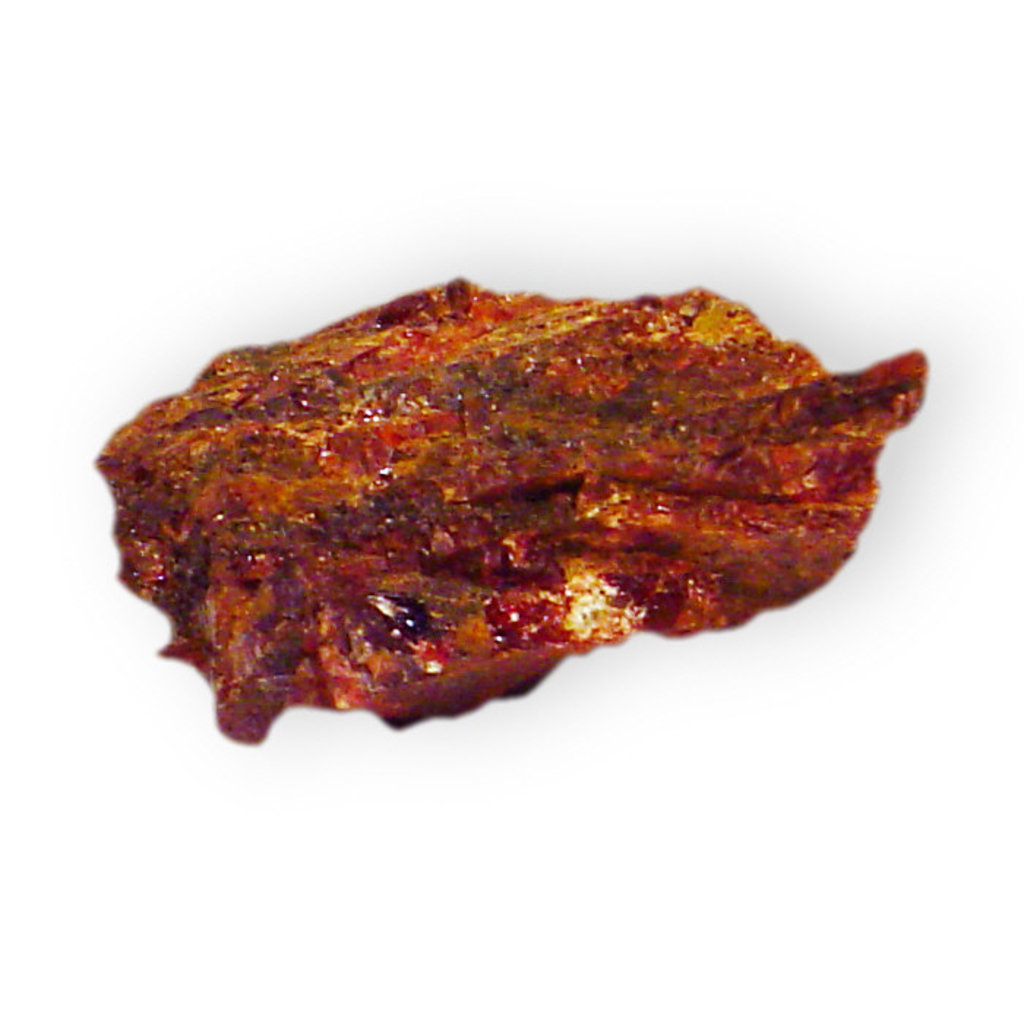Get PeakVisor App
Sign In
Search by GPS coordinates
- Latitude
- ° ' ''
- Longitude
- ° ' ''
- Units of Length

Yes
Cancel
Share ×

Scan the QR code and open PeakVisor on your phone
❤ Wishlist ×
Choose
Delete
The Siamese Ponds Wilderness covers nearly 113,000 acres (45,700 hectares) of low mountains, ponds, and wetlands in eastern New York, USA. The wilderness is part of the Adirondack Forest Preserve and contains 51 named mountains. Puffer Mountain is the tallest (3,451 ft/1,052 m) and most prominent (1,752 ft/534 m).

The Siamese Ponds Wilderness is located in eastern New York and is one of the larger wildernesses of the Adirondack Forest Preserve, state-owned lands within Adirondack Park. Officially designated as a wilderness in 1972, it spans 112,883 acres (45,682 hectares) and is home to attractions such as Auger Falls, Chimney Mountain, Siamese Ponds, Puffer Pond, Puffer Mountain, and Thirteenth Lake. The caves on Chimney Mountain are open from mid-May to mid-September and closed the rest of the year to protect the bats that live there.
The area consists of thickly forested mountains and valleys with rivers and streams running through them. There are close to 100 bodies of water and numerous small wetlands. The wilderness is a significant headwaters region in the Sacandaga watershed and the East Branch of the Sacandaga River runs through it.
A west-central section of the wilderness is a designated trail-less area. The southern part overlaps with Forks Mountain Primitive Area which includes a multi-use trail for horseback riders, cross country skiers, and snowmobiles. Silver Lake Wilderness, West Canada Lake Wilderness, and Ferris Lake Wild Forest neighbor the wilderness to the west.
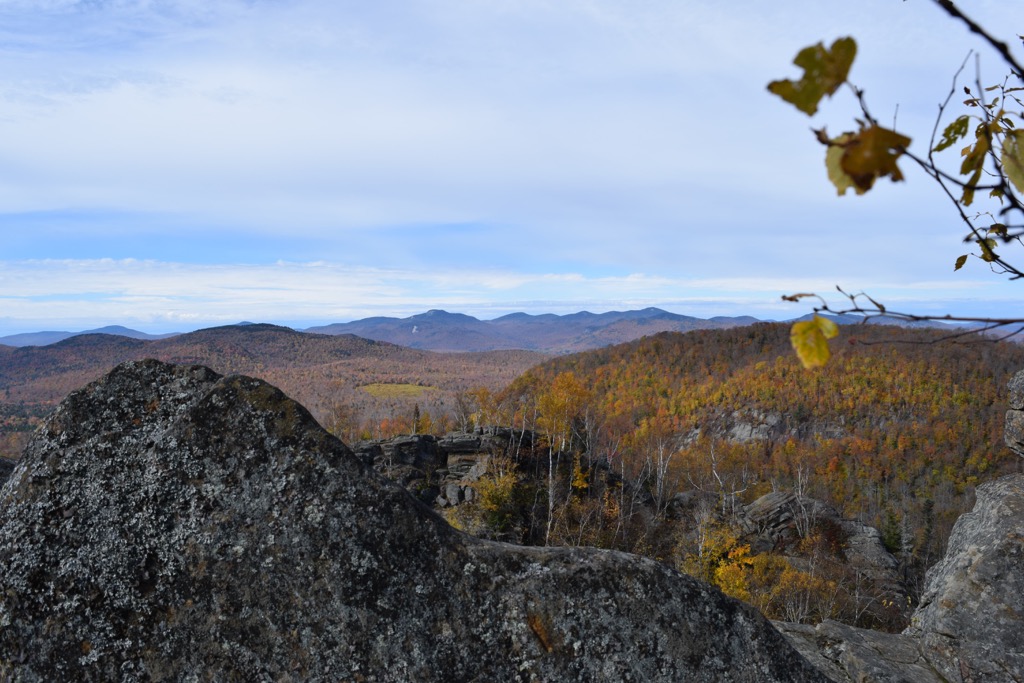
The Adirondack Mountains have an interesting origin. A dome that now measures approximately 160 mi (260 km) wide and 1 mi (1.6 km) tall began to form about 20 million years ago and achieved something close to its current form about 5 million years ago. In fact, the mountains continue to rise incrementally each year. Although the mountains are geologically young, some rocks in the range date back one billion years.
The oldest rocks are part of the Grenville series which formed during the Grenville Orogeny. These Precambrian sedimentary rocks were later uplifted by igneous intrusions such as granite, gabbro, and anorthosite through multiple tectonic plate collisions such as the Taconian Orogeny, the Acadian Orogeny, and the Alleghanian Orogeny.
As cycles of uplift and erosion occurred, many of the Grenville rocks wore away, leaving behind igneous mountains like Gore and Puffer Mountain, and remnants of Grenville rock like metamorphosed marble, schist, and quartzite. While most of the higher elevations are primarily igneous rock, Chimney Mountain is an exception and is formed of quartzite, a metamorphosed sandstone.
More recently, glaciers carved out the region. The most recent advance of an ice sheet in the region began about 80,000 years ago and peaked about 21,000 years ago. The footprints of the glaciers remain in erratics – rocks deposited across the landscape as glaciers melted, ponds formed by indentations left by melting ice blocks, and gravel and sediment deposits called eskers that were deposited in long ridges, usually where lakes are found today, by glacial meltwater.
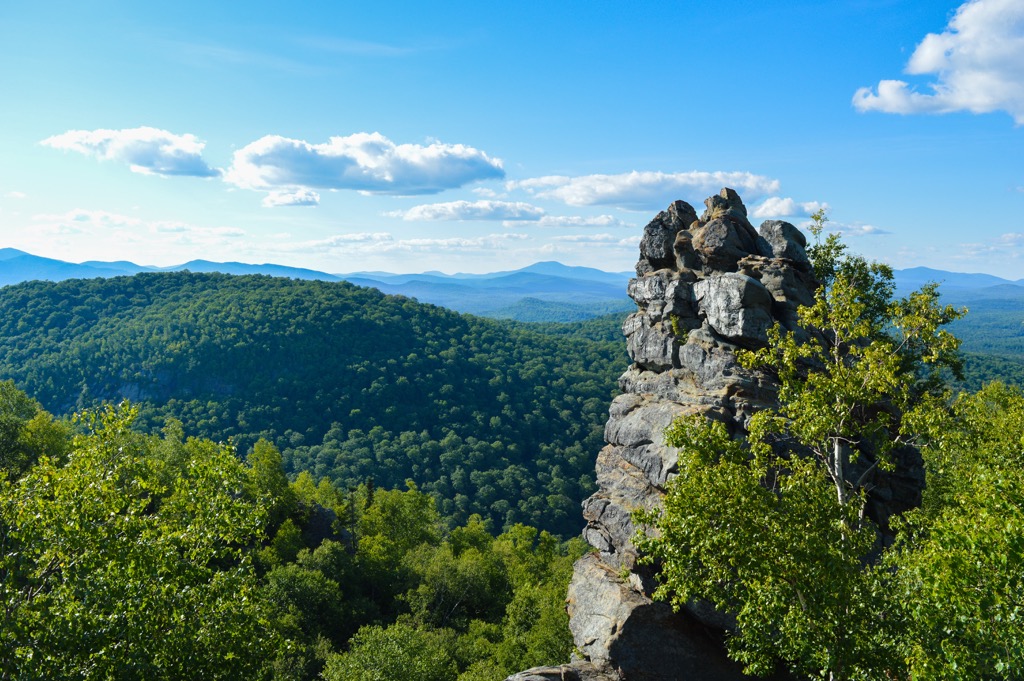
Receiving 45 to 50 in (114 to 127 cm) of precipitation annually, the Siamese Ponds Wilderness is lush and supports a fairly intact ecosystem. The footprint of past land uses and natural disasters shapes the forest today, but it has remained fairly undisturbed except for light recreational use over the last century.
Historical logging and windstorms reduced much of the overstory of pine, spruce, and hemlock. On better drained soils, this created space for hardwoods to grow. Other areas that were farmed or burned support stands of pioneer species such as birch, aspen, cherry, and pine, as well as beech, maple, birch, fir, and spruce.
Primary tree cover is either spruce-fir or northern hardwood. The spruce-fir species include red spruce, white spruce, and balsam fir. The hardwoods consist of northern white cedar, eastern hemlock, eastern white pine, tamarack, red maple, paper birch, aspens, white ash, American beech, sugar maple, and yellow birch. Some eastern hemlock, balsam fir, and red spruce grow with the hardwoods.
The understory is filled with dogwoods, alders, honeysuckle, witch hobble, and wild raisin. Ground plants include trillium, adder’s tongue, sarsaparilla, winter green, Indian cucumber, clintonia, mosses, and various ferns.
The wetlands, ponds, creeks, and forested mountains support numerous birds ranging from waterfowl to songbird to birds of prey. One is likely to see common loons, grebes, herons, bitterns, ducks, geese, and shorebirds in wet riparian habitats. Songbirds, woodpeckers, sapsuckers, chickadees, robins, warblers, goshawks, ospreys, and multiple hawks, owls, and eagles nest in the forests here.
Mammals that occupy this forest and the rest of the Adirondacks include white-tailed deer, black bears, coyotes, bobcats, raccoons, foxes, fishers, weasels, minks, muskrats, otters, beavers, porcupines, martens, snowshoe hares, squirrels, bats, shrews, moles, and chipmunks.
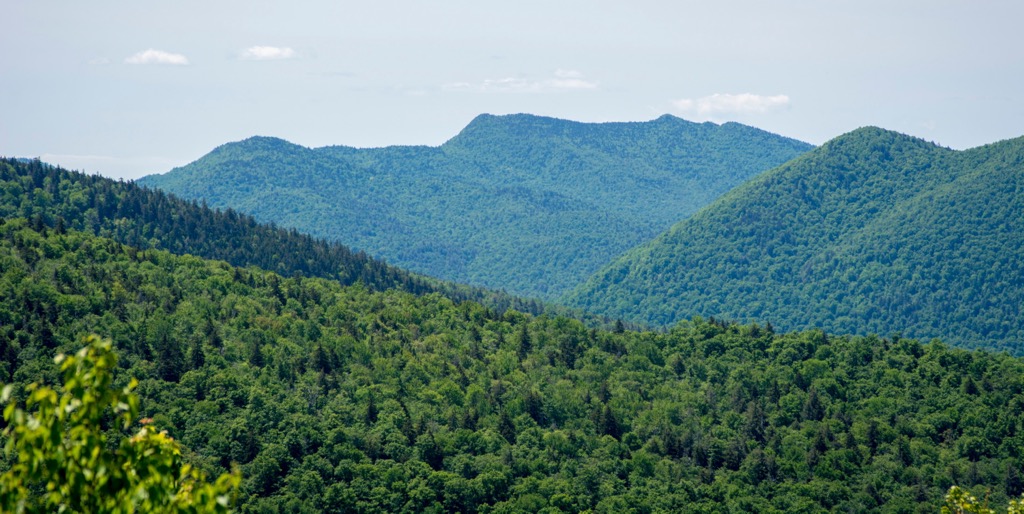
The Siamese Ponds Wilderness is part of the Mohawk territory, the furthest east tribe of the Iroquois Federation. They were a semisedintary tribe with the women growing corn while the men hunted and fished. They sided with the British during the American Revolution and when the war ended, many moved up to Canada.
Throughout the 1800s and into the early 1900s, the area was home to a few dispersed settlements and tanneries. Much of the pine and spruce was cut for lumber and pulp by the late 1800s, and some of the cleared spaces were converted to farmland. Garnets are scattered throughout the bedrock in the north section of the Siamese Ponds Wilderness, prompting the opening of several garnet mines in the region. There was one in the hills near Thirteenth Lake that operated from 1908 to 1928.
From 1877 to 1910, the land transferred back to state ownership through a series of tax sales and purchases. This helped end logging in the forest and allowed the land to be established as a wilderness in 1972.
17 marked trails covering more than 50 mi (80 km) crisscross the Siamese Pond Wilderness. Additionally, there are 30 mi (48 km) of unmarked trails, used mainly by hunters and fishermen but open to any hiker who has done a bit of research and is comfortable navigating in the woods. There are 39 primitive tent sites and four lean-tos. Campsites do not have hook-ups for water or electricity.
Popular activities include hiking, boating, fishing, paddling, cross country skiing, snowmobiling, hunting and trapping. If you swim in the ponds, you will likely find yourself with a few leeches. Thirteenth Lake is the best option for paddlers and boaters – it is large and the trail to access it is short.
The trail to the Siamese Ponds is 12 mi (19 km) out and back. The trailhead is located off Route 8, south of Bakers Mills, in the town of Johnsburg. Signs marking the trailhead say Eleventh Mountain but, since there is no official trail up to Eleventh Mountain, the marked trail here leads to the Siamese Ponds. The trail has long, flat stretches and minimal elevation gain. It follows the Sacandaga River for a while before crossing over to head to the ponds.
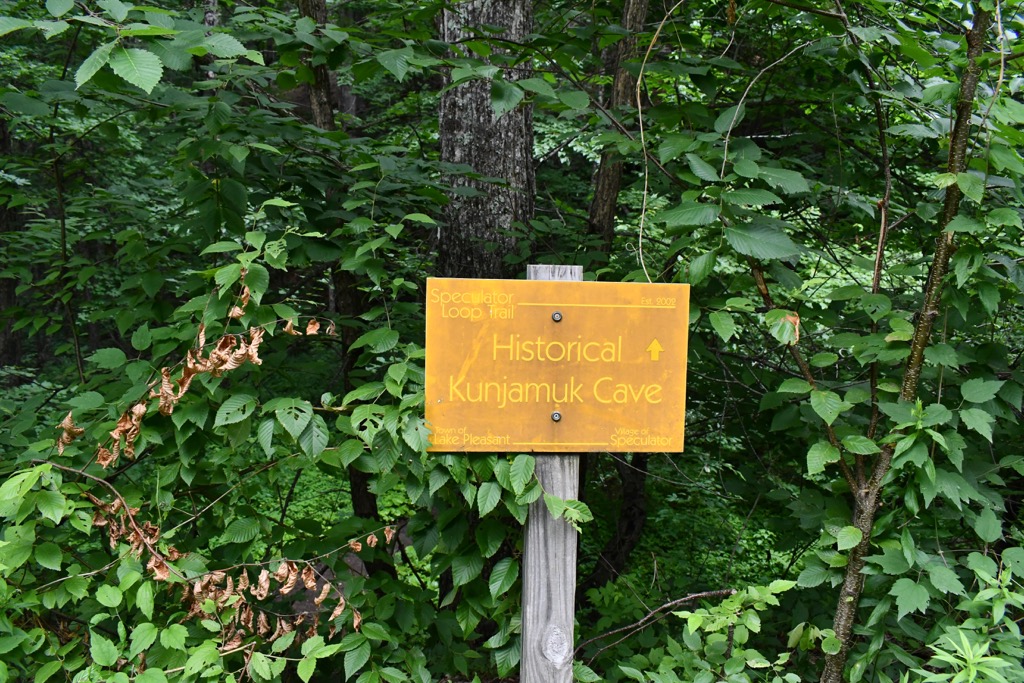
The popular hike to Chimney Mountain is 2.5 mi (4 km) out and back with 980 ft (299 m) elevation gain. It costs $5 to park at the trailhead. There are great views of the chimney and panoramic vistas along the way. There are caves to explore near the top (open seasonally) and a headlamp can make this a bit easier to do. There is an official campsite at the top as well.
This 8.6 mi (13.8 km) out and back trail gains just under 1,400 ft (427 m) in elevation. The last stretch of trail is steep. It’s a popular trail for the diverse landscape it traverses – passing through forests and alongside rivers and ponds. The great views from the top are worth the effort, but be warned that the bugs may be bad in summer.
Besides the primitive campsites in the wilderness, campsites with more amenities can be found at Indian Lake Islands Campground, Lewey Lake Campground, Moffit Beach Campground, or Sacandaga Campground. A few small towns are located near the wilderness with a smattering of basic amenities. Saratoga Springs and Albany are two larger cities, both two hours or less away by car.
With a small population of just 700 people, North Creek nonetheless is a handy jumping off point to explore some of the tucked away adventures in the region. From here, one can tour a garnet mine, go whitewater rafting, or visit a glassblowing workshop. There are plenty of hiking, biking, fishing and boating opportunities in the summer, and cross country skiing, snowshoeing, and snowmobiling in the winter.
The town is only a 50 minute drive away from the wilderness. It has a few options for sleeping over – a mountain resort, hostel, a few B&Bs, lodges, and rental cabins. If you’re looking to grab a bite to eat in town, you’ll find a small choice of eateries including taverns, bars, delis, and cafes.
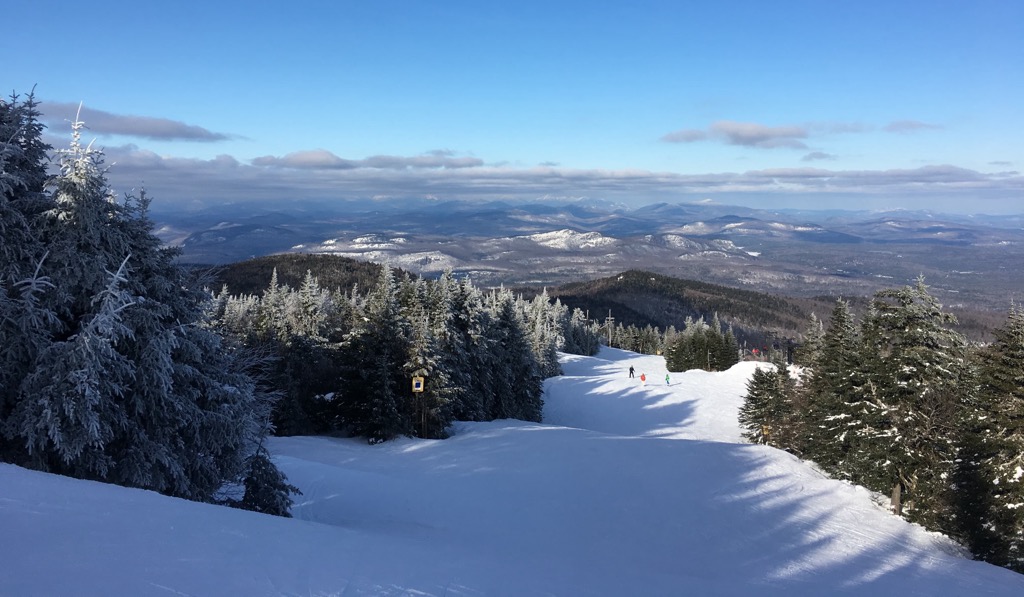
An hour and a half away, the city of Saratoga Springs is home to 28,000 people and well-known for its horse racing history. If you’re passing through here, visit the race track for a quintessential Saratoga Springs experience. Or check out the nearby Saratoga Lake to swim, paddle, boat, or go fishing. A handful of restaurants offer lakeside dining. If you’re in town, explore the downtown’s museums, art galleries, and bookstores.
Grab a bite to eat at a bistro, pizzeria, tavern, or cafe. There are a few Mexican and Italian options, as well as places catering to those who want to bring their dog along, sample custom cocktails, or prefer gluten-free and vegetarian options. You can stay over here in hotels, motels, B&Bs, rental properties, or at nearby RV parks and campsites.
New York’s capital is two hours away by car and has a population of just under 97,000 people. Popular ways to get out and experience the city’s surrounding landscape include floating along the Hudson River on the Dutch Apple Cruises, paddling at Thompson Lake State Park, or visiting the underground caves at Howe Cavern.

The city has several museums and historical sites, a sweet downtown filled with locally-owned shops, and two neat theaters, the Palace Theater and the Egg, that host concerts, stand-up comedy, and other performances and shows.
Whether looking for a budget hotel, a historic inn, a place to park your RV, or vacation rental, you’ll find it in Albany. The restaurant scene here has a local feel with many craft beverages and intimate, quirky atmospheres. You’ll find a range of options from fine dining to American steakhouses, cuisines from around the world, and vegan and vegetarian options.
Explore Siamese Ponds Wilderness with the PeakVisor 3D Map and identify its summits.






